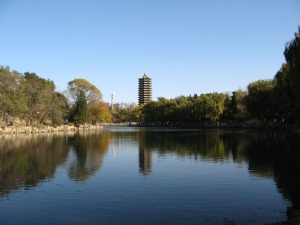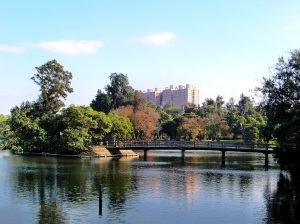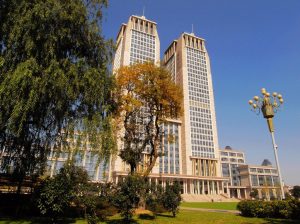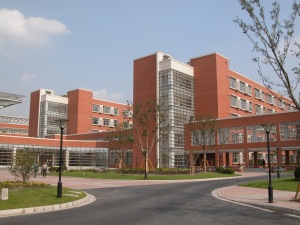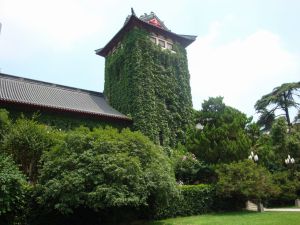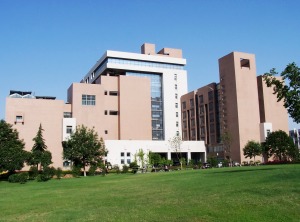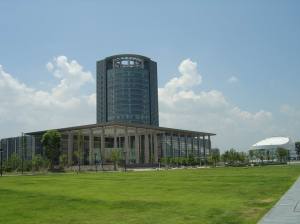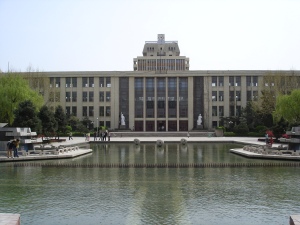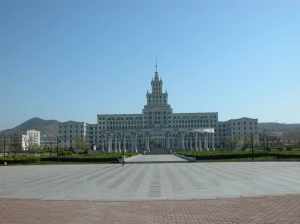C9 League (九校联盟)
Alliance of 9 prestigious Chinese Universities selected by the government:
Peking University is a comprehensive and National key university. The campus, known as “Yan Yuan”– the gardens of Yan, is situated at the northeast of the Haidian District at the western suburbs of Beijing. It stands near the Yuan Ming Gardens and the Summer Palace.
The University consists of 30 colleges and 12 departments, with 93 specialties for undergraduates, 2 specialties for the second Bachelor’s degree, 199 specialties for Master candidates and 173 specialties for Doctoral candidates. While still laying stress on basic sciences, the university has paid special attention to the development of applied sciences.
The campus of Tsinghua University is situated on the former imperial gardens of the Qing Dynasty and surrounded by a number of historical sites in north-west Beijing. As one of China?s most renowned universities, Tsinghua is an important school for fostering talent and scientific research.
Tsinghua University was established in 1911, originally under the name of Tsinghua Xuetang. The university section was founded in 1925 and undergraduate students were then enrolled. The name National Tsinghua University was adopted in 1928. It has developed into a comprehensive research university at a breathtaking pace. At present, the university has 14 schools, 56 departments with faculties in science, engineering, the humanities, law, medicine, history, philosophy, economics, management, education and art. The university currently has over 4000 faculty members, including 1172 full professors and 1,061 associate professors. Among them, there are 36 members of the Chinese Academy of Sciences and 32 members of the Chinese Academy of Engineering.
Fudan University was established in 1905, initially named Fudan Public School. The name “Fudan” originated from a famous statement, meaning unremitting effort.
Fudan University comprises 17 full-time schools (including 66 specialties) and 4 departments. They have 68 specialties for Bachelor’s Degree Candidates, 209 specialties for Master’s Degree Candidates and 157 specialties for Doctoral Degree Candidates.
– Shanghai Jiao Tong University (上海交通大学)
Shanghai Jiao Tong University is a key university in China. It was founded in 1896. It is one of the oldest universities in China. The University has nurtured large numbers of outstanding figures, include former China President Jiang Zemin, and etc.
SJTU boasts 20 academic schools, There are 60 undergraduate programs, 152 masters-degree programs, 93 Ph.D programs, 21 post-doctorate programs, 16 State key doctorate programs and 14 State key laboratories and National engineering centers. It has a good number of famous scientists and professors, including 22 academicians of the Academy of Sciences and Academy of Engineering, 35 “Changjiang Chair Professors” and more than 1, 420 professors and associate professors.
Nanjing University is one of China’s key comprehensive universities and it functions directly under the Ministry of Education. It is located in the ancient capital of six dynasties – Nanjing. The University dates back to 1902 when Sanjiang Normal School was founded, and then evolved as Liangjiang Normal School, Nanjing Higher Normal School, National Southeast University, the Fourth Zhongshan University, and National Central University. On August 8, 1949, the National Central University was renamed National Nanjing University. In October 1950, as required by the Ministry of Education, the name was changed to Nanjing University. In 1952, when a nationwide readjustment of universities took place, some schools, such as the School of Engineering and the School of Agriculture, were separated from the University; meanwhile, the University merged with the School of Liberal Arts and the School of Sciences of the University of Nanking, which was founded in 1888. The new university remained Nanjing University and the campus of Nanjing University moved from Sipailou to Gulou.
– University of Science and Technology of China (中国科学技术大学)
The University of Science and Technology of China is a new type of university established by the Chinese Academy of Sciences (CAS) after the founding of the New China. The establishment of the University is aimed at fostering high-level personnel of science and technology absolutely necessary for the development of the national economy, national defense construction, and education in science and technology. The University was founded in Beijing in September of 1958. Mr. Guo Moruo is the first president of the University. The establishment was hailed as “A Major Event in the History of Chinese Education and Science”. CAS has supported the University by combining most of its Institutes with the departments of the University. CAS has pooled the entire strength of its faculty and its advantage in science and technology for the development of the University. USTC is listed in the top 16 national key universities by the Central Committee of the CCP, becoming the youngest national key university.
In September 1998, a new Zhejiang University was established on the basis of the amalgamation of the four former individual universities, namely Zhejiang University, Hangzhou University, Zhejiang Agricultural University and Zhejiang Medical University, which were all located in the garden city of Hangzhou. Approved by the State Council, the founding of the new Zhejiang University has been a significant move in the reform and development of China’s higher education. The four universities have grown out of the same ancestry, the Qiushi (with the literal meaning of “seeking truth” in Chinese) Academy, which was founded a century ago as one of the earliest institutions of higher learning in China. As a result, they have all inherited from it the spirit of “Qiushi” and at the same time, built up their own distinctive features in teaching and research.
– Xi’an Jiao Tong University (西安交通大学)
Xi’an Jiaotong University, a national key university under the direct jurisdiction of the Ministry of Education, is one of the country’s oldest institutions of higher learning. Founded in Shanghai in 1896 as Nanyang Public, it was renamed Jiaotong University in 1921. In 1956, at the direction of the State Council, the university was moved to Xi’an, and renamed Xi’an Jiaotong University (XJTU). As one of the country’s national key universities, it was included in the first group of universities singled out for high priority development under the country’s seventh and eighth five year plans. It was also included in the first group of universities to benefit from Project 211 and Project 985, with the goal of becoming a world class university. Under a plan adopted by the State Council in April, 2000, the original Xi’an Jiaotong University was merged with the Xi’an Medical University and the Shaanxi Institute of Finance and Economics to form the new Xi’an Jiaotong University.
– Harbin Institute of Technology (哈尔滨工业大学)
Harbin Institute of Technology (HIT) was founded in 1920. From its beginning, HIT has received preferential support from the central government. In 1954, the Ministry of Higher Education designated, for the first time, six national key universities. HIT was the only one of the six outside of Beijing. In 1984, HIT again found its way onto the list of 15 national key universities to receive special support. In 1996, HIT was among the first group of universities to be included in Project 211. This project targets 100 institutions of higher education in China to receive preferential support for development in order to become world-class universities in the 21st century. In 1999, HIT was listed as one of the top nine key universities in China. This distinction provided HIT with the opportunity to develop into a highly-competitive first-rate university with the assistance of the Ministry of Education and the Heilongjiang Provincial Government.
